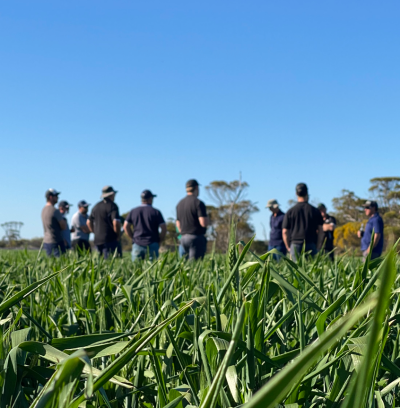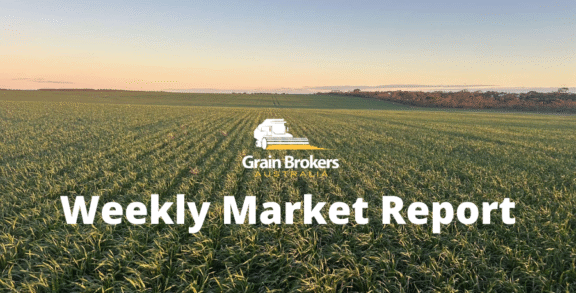
The Australian grain marketing season runs from October to September each year, and with the release of the nation’s September export data by the Australian Bureau of Statistics late last week, the curtain is drawn on yet another successful grain shipment program.
Following a recovery in grain output from the 2024/25 harvest compared to the previous season came a rebound in the total export volume of the four major commodities: wheat, barley, sorghum and canola. Although canola shipments did let the team down, lagging the previous season’s total.
Total exports, bulk and containerised, of the big four in the 2024/25 season ended up at 39.62 million metric tonne, up from 35.87MMT the previous season. This is Australia’s third-highest export volume on record, behind the 47.76MMT shipped in 2022/23 and the 43.22MMT exported in 2021/22.
Unsurprisingly, China was the biggest destination with 9.42MMT, or 23.79 per cent of the nation’s total grain export volume. However, this did drop from 11.81MMT or 28.97 per cent of the 2023/24 program. China’s imports of barley were almost unchanged at 6.03MMT, equivalent to an average of 500,000 metric tonne per month. The volume of sorghum increased by just over 400,000 metric tonne to 2.34MMT. Wheat was the big loser, falling 72 per cent, or 2.7MMT, from 3.76MMT to just 1.05MMT on the back of a significant drop in total Chinese wheat import demand.
Wheat remained Australia’s biggest grain export commodity in 2024/25, with 23.48MMT shipped to 44 destinations globally, making up 59.3 per cent of the national shipment task for the four primary grains. This was up from 19.72MMT in 2023/24 and is the nation’s fourth-largest wheat export program on record, behind the 31.77MMT shipped in 2022/23, 27.45MMT in 2021/22 and 23.71MMT in 2020/21.
The dramatic fall in China’s imports saw Indonesia assume the mantle as Australia’s key wheat destination with 4.47MMT, or 19 per cent of total exports. Second on the list was the Philippines with 3.53MMT, or 15 per cent of the total. Thailand came next with 1.62MMT, followed by Vietnam at 1.57MMT and South Korea at 1.46MMT. The 1.05MMT shipped to China put it eighth on the list, with 4.5 per cent of the total wheat program. This compares to 3.76MMT, or 19 per cent of the total in 2023/24, and 7.59MMT or 23.9 per cent in the record export year of 2022/23.
National barley exports, malting and feed, were close to record pace in the first half but died away late in the season to finish on 8.13MMT sold to 27 individual destinations globally. This is the second-largest barley shipping program on record, behind the massive 2016/17 season achievement of 9.16MMT, when China took over 6.3MMT.
Beijing’s appetite for Australian barley may have waned early this decade due to political reasons, but it has bounced back to over 6MMT in each of the past two seasons, after import restrictions were dropped in July 2023. Shipments to China accounted for 73.1 per cent of the total barley program last season, down from 77.5MMT in 2023/24. Japan maintained its second-place ranking with 7.2 per cent of the barley shipments, but its proportion dropped from 11 per cent a season earlier. Saudi Arabia came in third on the list on 4.8 per cent, followed by Mexico on 3.2 per cent.
Shipments of canola fell by almost 800,000 metric tonne from a record 6.19MMT in 2023/24 to 5.4MMT last season. However, it was still the fourth-largest on record, with 2022/23 and 2021/22 also being bumper export seasons. The European Union maintained its status as the primary destination for Australian seed, taking 3.58MMT, or two-thirds of the shipments. The United Arab Emirates with purchases of 621,000 metric tonne, Pakistan with 468,000 metric tonne, Japan with 303,000 metric tonne and Bangladesh with 192,000 metric tonne were the other notable buyers.
Sorghum sales remained strong throughout the 2024/25 season, with shipments topping 2.5MMT for only the second time in history. This was up from 2.06MMT a season earlier and down from 2.75MMT in 2022/23. All of the nation’s eggs are in one basket here, with China accounting for 93.7 per cent of the nation’s sorghum sales in 2024/25. The only other destinations of note were Kenya with 89,000 metric tonne and Taiwan with 45,000 metric tonne. Queensland ports shipped 69.7 per cent of the sales, and New South Wales ports accounted for the balance.
After one of the biggest harvests on record in 2024, Western Australia’s five export terminals shipped a total of 19.53MMT of wheat, barley and canola in 2024/25. This represented 49.3 per cent of the national total and was up significantly from the 15.59MMT shipped in the previous corresponding period. This was made up of 10.76MMT of wheat, 5.48MMT of barley, and 2.79MMT of canola, constituting 48.2 per cent, 67.5 per cent and 53.5 per cent of each commodity’s national export program, respectively. The state’s ports also shipped more than 820,000 metric tonne of pulses and oats last season.
New South Wales was the second-largest export state in 2024/25 with 8.14MMT, up from 3.68MMT in 2023/24, and 20.5 per cent of the national program. Exports out of Queensland also increased season-on-season from 1.77MMT to 2.67MMT, or 6.7 per cent of the total. A poor harvest in southeastern Australia saw the shipping volume in South Australia fall significantly from 7MMT to 3.5MMT, as was the case for Victoria, declining from 7.87MMT to 5.78MMT.
There were 20 export terminals that loaded bulk shipments of Australian grain in the 2023/24 season, with Kwinana in Western Australia being the biggest. It shouldered 20.6 per cent of the national grain export task, or 7.82MMT, up from 5.85MMT a year earlier. The second-biggest port was Albany in Western Australia, with 4.03MMT or 10.6 per cent of the total, up from 3.12MMT a season earlier. The third and fourth placegetters were in New South Wales, with Port Kembla on 8.8 per cent edging out Newcastle on 8.4 per cent of the country’s export feat in 2024/25.
Outside of the big four, exports of chickpeas jumped dramatically from 500,000 metric tonne in 2023/24 to 2.09MMT last season. India with 1.41MMT, and Pakistan with 323,000 metric tonne, accounted for 83 per cent of the demand. Lentil exports went the other way, dropping from 1.5MMT to 1.05MMT, with India, Bangladesh and Sri Lanka accounting for almost 900,000 metric tonne, or 85.2 per cent of total shipments. Strong demand for oats led to a rise in exports of 223,000 metric tonne to 521,000 metric tonne, with China accounting for 85.7 per cent of the sales.
Call your local Grain Brokers Australia representative on 1300 946 544 to discuss your grain marketing needs.
Written by Peter McMeekin.





